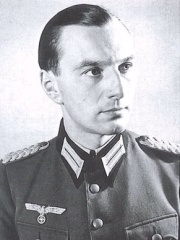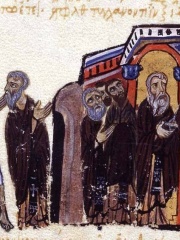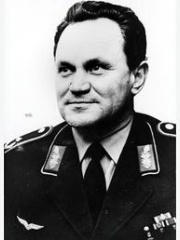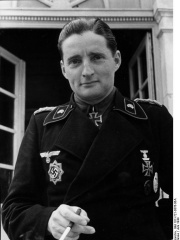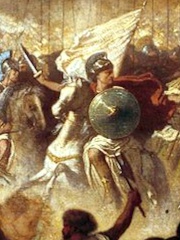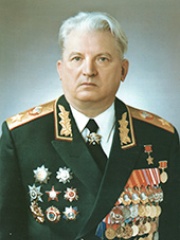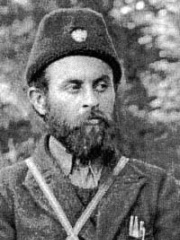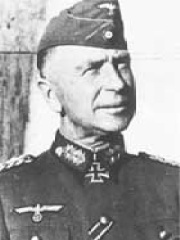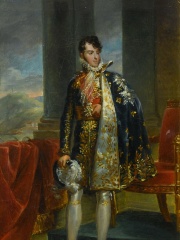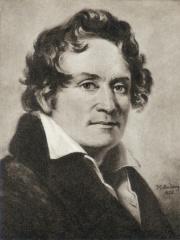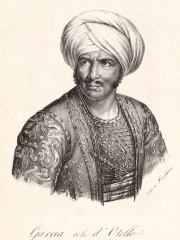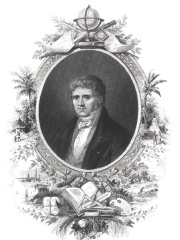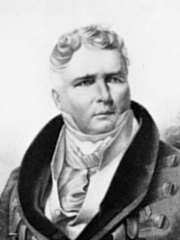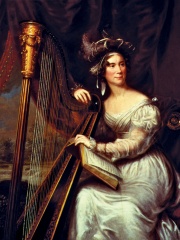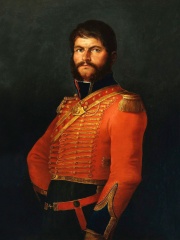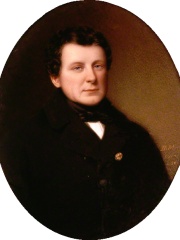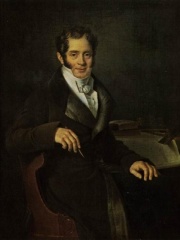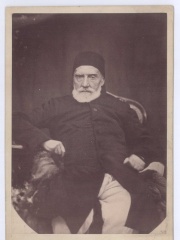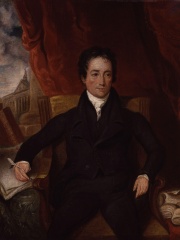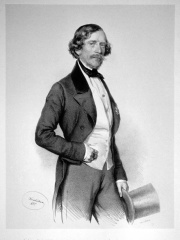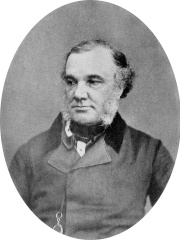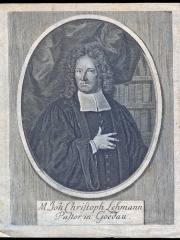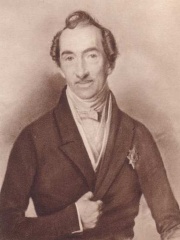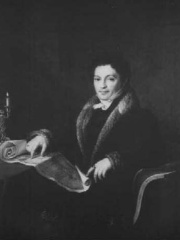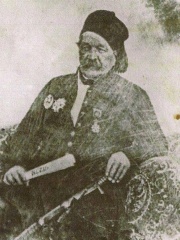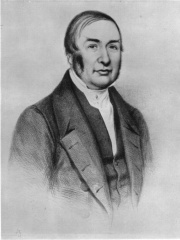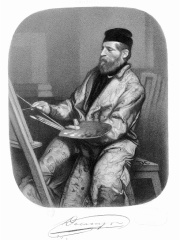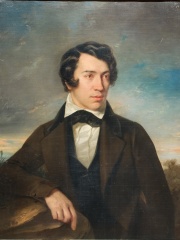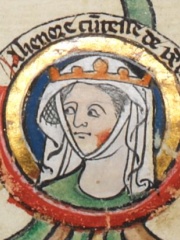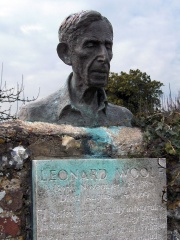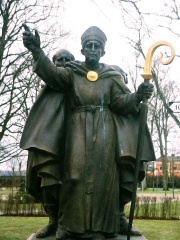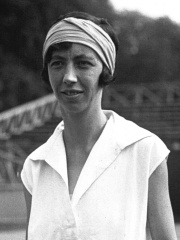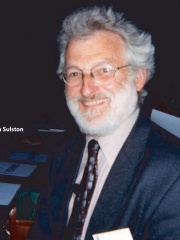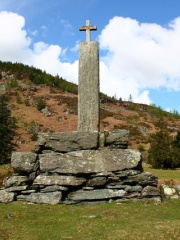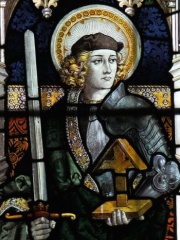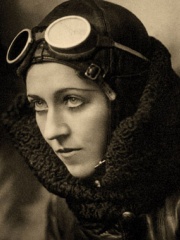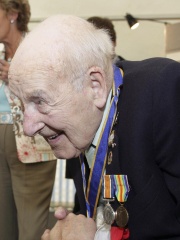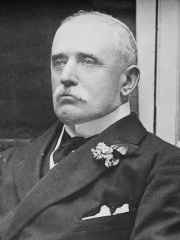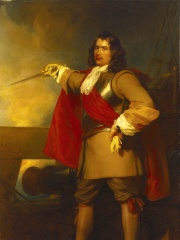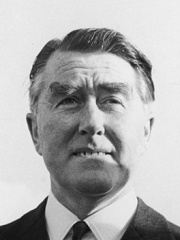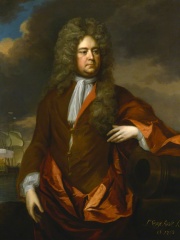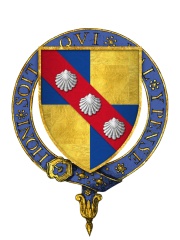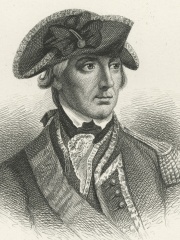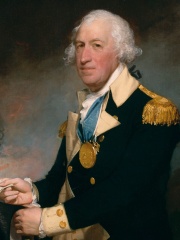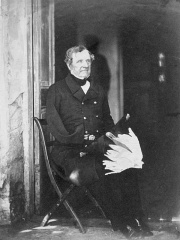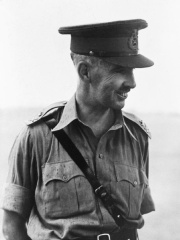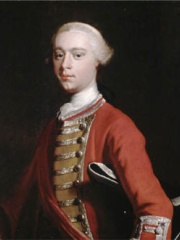MILITARY PERSONNEL
Thomas Cochrane, 10th Earl of Dundonald
1775 - 1860
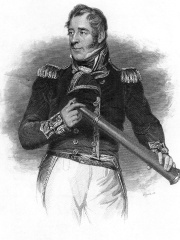
 Thomas Cochrane, 10th Earl of Dundonald
Thomas Cochrane, 10th Earl of Dundonald
Thomas Cochrane, 10th Earl of Dundonald GCB (14 December 1775 – 31 October 1860), styled Lord Cochrane between 1778 and 1831, was a Scottish naval officer, peer, mercenary and politician. Serving during the French Revolutionary and Napoleonic Wars in the Royal Navy, his naval successes led Napoleon to nickname him le Loup des Mers (the Sea Wolf). He was successful in virtually all of his naval actions.Cochrane was dismissed from the Royal Navy in 1814 after a controversial conviction for fraud on the London Stock Exchange. Read more on Wikipedia
Since 2007, the English Wikipedia page of Thomas Cochrane, 10th Earl of Dundonald has received more than 1,180,740 page views. His biography is available in 21 different languages on Wikipedia. Thomas Cochrane, 10th Earl of Dundonald is the 1,025th most popular military personnel (down from 781st in 2019), the 1,762nd most popular biography from United Kingdom (down from 1,448th in 2019) and the 36th most popular British Military Personnel.
Memorability Metrics
1.2M
Page Views (PV)
54.93
Historical Popularity Index (HPI)
21
Languages Editions (L)
3.21
Effective Languages (L*)
3.04
Coefficient of Variation (CV)
Page views of Thomas Cochrane, 10th Earl of Dundonalds by language
Over the past year Thomas Cochrane, 10th Earl of Dundonald has had the most page views in the English wikipedia edition with 154,653 views, followed by Spanish (52,615), and Portuguese (12,372). In terms of yearly growth of page views the top 3 wikpedia editions are Indonesian (57.34%), Portuguese (47.74%), and Basque (37.24%)
Among MILITARY PERSONNELS
Among military personnels, Thomas Cochrane, 10th Earl of Dundonald ranks 1,025 out of 2,058. Before him are Bernd Freytag von Loringhoven, Presian, Walter Krupinski, Hermann von Oppeln-Bronikowski, Clearchus of Sparta, and Semyon Kurkotkin. After him are Pavle Đurišić, François Joseph Westermann, Maximilian de Angelis, Mohamed Oufkir, Zdravko Tolimir, and Rasim Delić.
Most Popular Military Personnels in Wikipedia
Go to all RankingsBernd Freytag von Loringhoven
1914 - 2007
HPI: 54.98
Rank: 1,019
Presian
997 - 1061
HPI: 54.98
Rank: 1,020
Walter Krupinski
1920 - 2000
HPI: 54.97
Rank: 1,021
Hermann von Oppeln-Bronikowski
1899 - 1966
HPI: 54.95
Rank: 1,022
Clearchus of Sparta
401 BC - 401 BC
HPI: 54.94
Rank: 1,023
Semyon Kurkotkin
1917 - 1990
HPI: 54.94
Rank: 1,024
Thomas Cochrane, 10th Earl of Dundonald
1775 - 1860
HPI: 54.93
Rank: 1,025
Pavle Đurišić
1909 - 1945
HPI: 54.93
Rank: 1,026
François Joseph Westermann
1751 - 1794
HPI: 54.93
Rank: 1,027
Maximilian de Angelis
1889 - 1974
HPI: 54.92
Rank: 1,028
Mohamed Oufkir
1920 - 1972
HPI: 54.92
Rank: 1,029
Zdravko Tolimir
1948 - 2016
HPI: 54.91
Rank: 1,030
Rasim Delić
1949 - 2010
HPI: 54.91
Rank: 1,031
Contemporaries
Among people born in 1775, Thomas Cochrane, 10th Earl of Dundonald ranks 26. Before him are Camillo Borghese, 6th Prince of Sulmona, Bernhard Crusell, Johann Karl Wilhelm Illiger, Manuel García, Conrad Malte-Brun, and Antoni Radziwiłł. After him are Louisa Adams, Juan Martín Díez, Daniel O'Connell, Carlo Rossi, Stefan Bogoridi, and Charles Lamb. Among people deceased in 1860, Thomas Cochrane, 10th Earl of Dundonald ranks 23. Before him are Carl Ritter von Ghega, George Hamilton-Gordon, 4th Earl of Aberdeen, Ernst Moritz Arndt, Thomas Addison, Johann Georg Christian Lehmann, and Ii Naosuke. After him are George, Grand Duke of Mecklenburg-Strelitz, George William, Prince of Schaumburg-Lippe, Soliman Pasha al-Faransawi, James Braid, Alexandre-Gabriel Decamps, and Aleksey Khomyakov.
Others Born in 1775
Go to all RankingsCamillo Borghese, 6th Prince of Sulmona
NOBLEMAN
1775 - 1832
HPI: 57.91
Rank: 20
Bernhard Crusell
COMPOSER
1775 - 1838
HPI: 57.48
Rank: 21
Johann Karl Wilhelm Illiger
BIOLOGIST
1775 - 1813
HPI: 57.18
Rank: 22
Manuel García
SINGER
1775 - 1832
HPI: 55.67
Rank: 23
Conrad Malte-Brun
GEOGRAPHER
1775 - 1826
HPI: 55.46
Rank: 24
Antoni Radziwiłł
POLITICIAN
1775 - 1833
HPI: 55.22
Rank: 25
Thomas Cochrane, 10th Earl of Dundonald
MILITARY PERSONNEL
1775 - 1860
HPI: 54.93
Rank: 26
Louisa Adams
POLITICIAN
1775 - 1852
HPI: 54.13
Rank: 27
Juan Martín Díez
MILITARY PERSONNEL
1775 - 1825
HPI: 53.79
Rank: 28
Daniel O'Connell
POLITICIAN
1775 - 1847
HPI: 52.79
Rank: 29
Carlo Rossi
ARCHITECT
1775 - 1849
HPI: 52.34
Rank: 30
Stefan Bogoridi
POLITICIAN
1775 - 1859
HPI: 52.26
Rank: 31
Charles Lamb
WRITER
1775 - 1834
HPI: 51.89
Rank: 32
Others Deceased in 1860
Go to all RankingsCarl Ritter von Ghega
ARCHITECT
1802 - 1860
HPI: 57.29
Rank: 17
George Hamilton-Gordon, 4th Earl of Aberdeen
POLITICIAN
1784 - 1860
HPI: 57.20
Rank: 18
Ernst Moritz Arndt
PHILOSOPHER
1769 - 1860
HPI: 57.08
Rank: 19
Thomas Addison
PHYSICIAN
1793 - 1860
HPI: 56.52
Rank: 20
Johann Georg Christian Lehmann
BIOLOGIST
1792 - 1860
HPI: 55.80
Rank: 21
Ii Naosuke
POLITICIAN
1815 - 1860
HPI: 55.37
Rank: 22
Thomas Cochrane, 10th Earl of Dundonald
MILITARY PERSONNEL
1775 - 1860
HPI: 54.93
Rank: 23
George, Grand Duke of Mecklenburg-Strelitz
POLITICIAN
1779 - 1860
HPI: 54.69
Rank: 24
George William, Prince of Schaumburg-Lippe
POLITICIAN
1784 - 1860
HPI: 54.68
Rank: 25
Soliman Pasha al-Faransawi
MILITARY PERSONNEL
1788 - 1860
HPI: 54.55
Rank: 26
James Braid
PHYSICIAN
1795 - 1860
HPI: 54.51
Rank: 27
Alexandre-Gabriel Decamps
PAINTER
1803 - 1860
HPI: 54.46
Rank: 28
Aleksey Khomyakov
PHILOSOPHER
1804 - 1860
HPI: 54.16
Rank: 29
In United Kingdom
Among people born in United Kingdom, Thomas Cochrane, 10th Earl of Dundonald ranks 1,762 out of 8,785. Before him are Eleanor of England, Countess of Leicester (1215), John Flaxman (1755), Archibald Leitch (1865), Leonard Woolf (1880), Sigfrid of Sweden (1000), and Dorothy Shepherd-Barron (1897). After him are Peg Entwistle (1908), John Sulston (1942), Taliesin (518), Saint Alban (300), Amy Johnson (1903), and Rupert Sheldrake (1942).
Others born in United Kingdom
Go to all RankingsEleanor of England, Countess of Leicester
POLITICIAN
1215 - 1275
HPI: 54.95
Rank: 1,756
John Flaxman
SCULPTOR
1755 - 1826
HPI: 54.94
Rank: 1,757
Archibald Leitch
ARCHITECT
1865 - 1939
HPI: 54.94
Rank: 1,758
Leonard Woolf
WRITER
1880 - 1969
HPI: 54.94
Rank: 1,759
Sigfrid of Sweden
RELIGIOUS FIGURE
1000 - 1045
HPI: 54.94
Rank: 1,760
Dorothy Shepherd-Barron
TENNIS PLAYER
1897 - 1953
HPI: 54.93
Rank: 1,761
Thomas Cochrane, 10th Earl of Dundonald
MILITARY PERSONNEL
1775 - 1860
HPI: 54.93
Rank: 1,762
Peg Entwistle
ACTOR
1908 - 1932
HPI: 54.92
Rank: 1,763
John Sulston
BIOLOGIST
1942 - 2018
HPI: 54.92
Rank: 1,764
Taliesin
WRITER
518 - 599
HPI: 54.91
Rank: 1,765
Saint Alban
RELIGIOUS FIGURE
300 - 305
HPI: 54.91
Rank: 1,766
Amy Johnson
PILOT
1903 - 1941
HPI: 54.91
Rank: 1,767
Rupert Sheldrake
BIOLOGIST
1942 - Present
HPI: 54.90
Rank: 1,768
Among MILITARY PERSONNELS In United Kingdom
Among military personnels born in United Kingdom, Thomas Cochrane, 10th Earl of Dundonald ranks 36. Before him are Henry Allingham (1896), Jeffery Amherst, 1st Baron Amherst (1717), John French, 1st Earl of Ypres (1852), Robert Blake (1599), Paddy Roy Bates (1921), and George Rooke (1650). After him are John Fastolf (1380), William Howe, 5th Viscount Howe (1729), Horatio Gates (1727), FitzRoy Somerset, 1st Baron Raglan (1788), Arthur Percival (1887), and James Wolfe (1727).
Henry Allingham
1896 - 2009
HPI: 55.87
Rank: 30
Jeffery Amherst, 1st Baron Amherst
1717 - 1797
HPI: 55.56
Rank: 31
John French, 1st Earl of Ypres
1852 - 1925
HPI: 55.23
Rank: 32
Robert Blake
1599 - 1657
HPI: 55.21
Rank: 33
Paddy Roy Bates
1921 - 2012
HPI: 55.18
Rank: 34
George Rooke
1650 - 1709
HPI: 55.12
Rank: 35
Thomas Cochrane, 10th Earl of Dundonald
1775 - 1860
HPI: 54.93
Rank: 36
John Fastolf
1380 - 1459
HPI: 54.79
Rank: 37
William Howe, 5th Viscount Howe
1729 - 1814
HPI: 54.57
Rank: 38
Horatio Gates
1727 - 1806
HPI: 54.43
Rank: 39
FitzRoy Somerset, 1st Baron Raglan
1788 - 1855
HPI: 54.42
Rank: 40
Arthur Percival
1887 - 1966
HPI: 54.41
Rank: 41
James Wolfe
1727 - 1759
HPI: 54.22
Rank: 42
